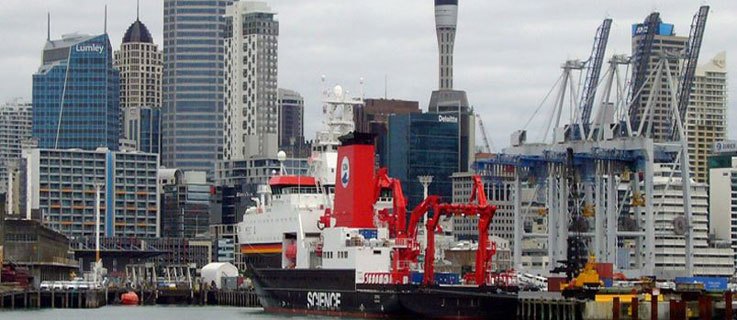Bionic joints, marine ecosystems, super-diversity: scientists from New Zealand and Germany are working together to find better answers to shared concerns. The science and technology cooperation agreement between the two countries began over forty years ago. New Zealand’s current coordinator of the initiative, physicist and atmospheric chemist Dave Lowe, explains how it works…
Why would two countries like New Zealand and Germany so far apart geographically, with quite different languages and cultures decide to work together in a science and research partnership? Intuitively you would think that such a relationship would be very unlikely and against all odds. However, the opposite is the case.
I’ve been active in the MBIE (NZ Ministry of Business, Innovation and Employment) NZ/Germany science and innovation coordinator role since 2012. However, my adventure with Germany began many years earlier when I was a Masters student at Victoria University. Back then, I couldn’t speak a word of German, but I decided to apply for a German government scholarship to do a PhD in atmospheric chemistry at the University of Cologne. As soon as I was accepted on the programme, I enrolled on a German course.
PhD with added extras
The experimental work for my PhD was based at a giant German research facility in Jülich, a small town in the middle of sugar beet fields and surrounded by brown coal fired power plants about halfway between Cologne and Aachen. My interactions with my supervisor and fellow researchers were all in German, with many moments of hilarity as I built fluency in the language and gained an appreciation of German attitudes to work and fun.
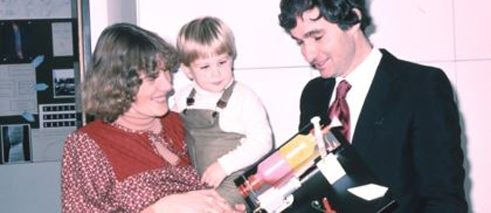 Receiving my “Doktorhut” from the University of Cologne. This German custom involves your colleagues making a weird hat which is supposed to represent the subject of your PhD work. Irena and son Greg (born in Jülich) look on. | © Dave Lowe
Receiving my “Doktorhut” from the University of Cologne. This German custom involves your colleagues making a weird hat which is supposed to represent the subject of your PhD work. Irena and son Greg (born in Jülich) look on. | © Dave Lowe
For a Kiwi like me it was a life-changing experience. My wife and I had four wonderful years in Jülich, and at the end of my scholarship I had gained not only a PhD but also two children born in Germany – as well as an enduring affinity with the country, its language and people.
Later, my career in atmospheric science took me to the USA as well as back to Germany and New Zealand. The experience of working in different research cultures – and particularly my first-hand understanding of research in Germany – proved to be an ideal background when I started as coordinator of the science and innovation relationship between New Zealand and Germany.
Excellence on both sides
To act effectively in the role from the New Zealand side, I needed in-depth knowledge of the strengths of the New Zealand and German science systems. One key to this has been looking for excellence in both countries and areas where groups might work together to produce work of mutual benefit.
All of this must be underpinned by suitable research funding and an important part of the role is liaising with funding agencies. In Germany these are mostly located in Bonn and include the Alexander von Humboldt foundation, the German Research Council (Deutscheforschungsgemeinschaft or DfG) and the Federal Ministry for Education and Research.
In New Zealand most funding for science projects comes from MBIE and I work on their behalf. I also work closely with the New Zealand embassy in Berlin and the German embassy in Wellington. Both embassies are incredibly supportive of the science bilateral between the countries.
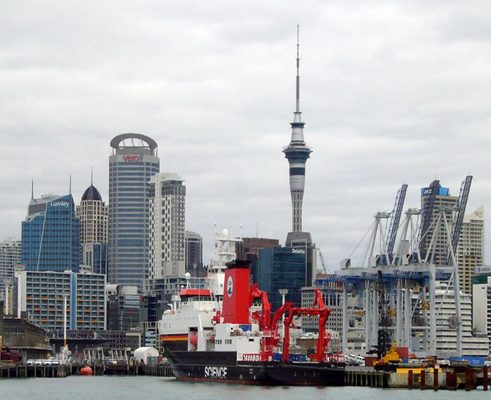 German research vessel, the RV Sonne, in Auckland harbour after a research voyage to the Kermadec trench region north of New Zealand in January 2017. | © Thomas Henzschel, German Embassy Wellington
German research vessel, the RV Sonne, in Auckland harbour after a research voyage to the Kermadec trench region north of New Zealand in January 2017. | © Thomas Henzschel, German Embassy Wellington
Many projects involve education and the DfG has developed a superb PhD graduate school concept. One such school is INTERCOAST, which has been running in Tauranga for eight years as a joint project between the Universities of Bremen and Waikato. It focuses on marine coastal science involving aspects of climate change, environmental law, aquaculture and coastal marine studies. The programme requires students to live and study in each other’s countries for several months each year. In the INTERCOAST case this has been incredibly successful with fifty-seven PhD graduates (about half from each country) so far. These highly motivated and talented young people are now in the workforce and contributing to improving environmental, social and economic conditions in both countries.
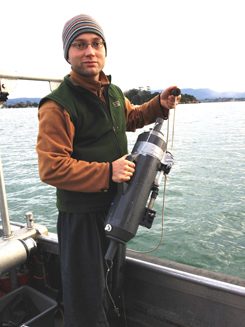 German INTERCOAST student sampling trace elements in seawater from Tauranga harbour | © Karin Bryan, University of Waikato
German INTERCOAST student sampling trace elements in seawater from Tauranga harbour | © Karin Bryan, University of Waikato
A second graduate school began this year as a joint project between the Universities of Auckland and Stuttgart in the field of “soft tissue robotics” or medical robotics. Already the researchers have developed a prototype of a remarkable bionic arm brace which will be used for injury prevention in the work place as well as patient rehabilitation. The brace is worn over the arm and elbow, and prevents the user from overexertion during heavy lifting in factories for example.
Scientist (and Chancellor) Dr Angela Merkel
One of the highlights during my time as science coordinator was a visit in 2014 by the German chancellor, Angela Merkel, to the University of Auckland. The chancellor has a PhD in physical chemistry, knows about the long-standing science relationship, and specifically asked to meet with young New Zealand scientists and students. You can imagine the lasting impact this had on these young people. New Zealand is viewed very favourably in Germany and the science linkages have helped cement a relationship built on trust and respect between the countries.
Science Success Stories
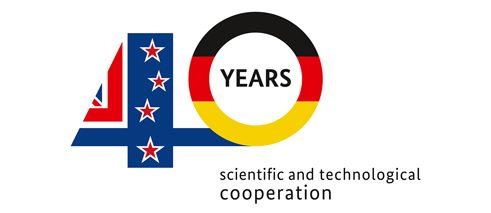 © MBIE
© MBIE
2017 marked forty years since the German and New Zealand governments signed an agreement to cooperate in joint scientific and technical research. During that period there have been literally thousands of successful projects ranging from one-on-one scientist exchange visits to multi-million dollar ventures. The projects have covered all disciplines, not only in physical and natural sciences but also in social science. One example of the latter is a joint project between Massey University and the Max Planck institute showing the benefits of “super-diversity” generated by migrants to Germany and New Zealand.
The forty years of science cooperation were celebrated at events in both countries. At a ‘New Zealand Day’ in October I gave a keynote speech in German to scientists and dignitaries from all over Germany. This level of fluency in the language has been essential throughout my role: it is expected by our German colleagues and leads to enhanced communication between the science ministries of both countries.
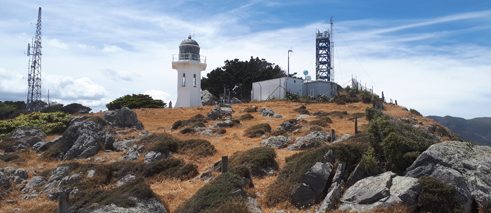 German scientists are interested in New Zealand for many reasons, including its location and environment. Baring Head atmospheric trace gas sampling station has developed into a globally recognized site for science, with many German researchers visiting the station. | © Dave Lowe
German scientists are interested in New Zealand for many reasons, including its location and environment. Baring Head atmospheric trace gas sampling station has developed into a globally recognized site for science, with many German researchers visiting the station. | © Dave Lowe
The successful relationship between New Zealand and Germany is no accident. It is built on a lot of features and values shared by both countries. We live in a difficult world facing climate change, energy supply, security, economic and health issues. Both the New Zealand and German governments are committed to investment in science and innovation as an effective way of tackling pressing problems and building bridges between countries.
